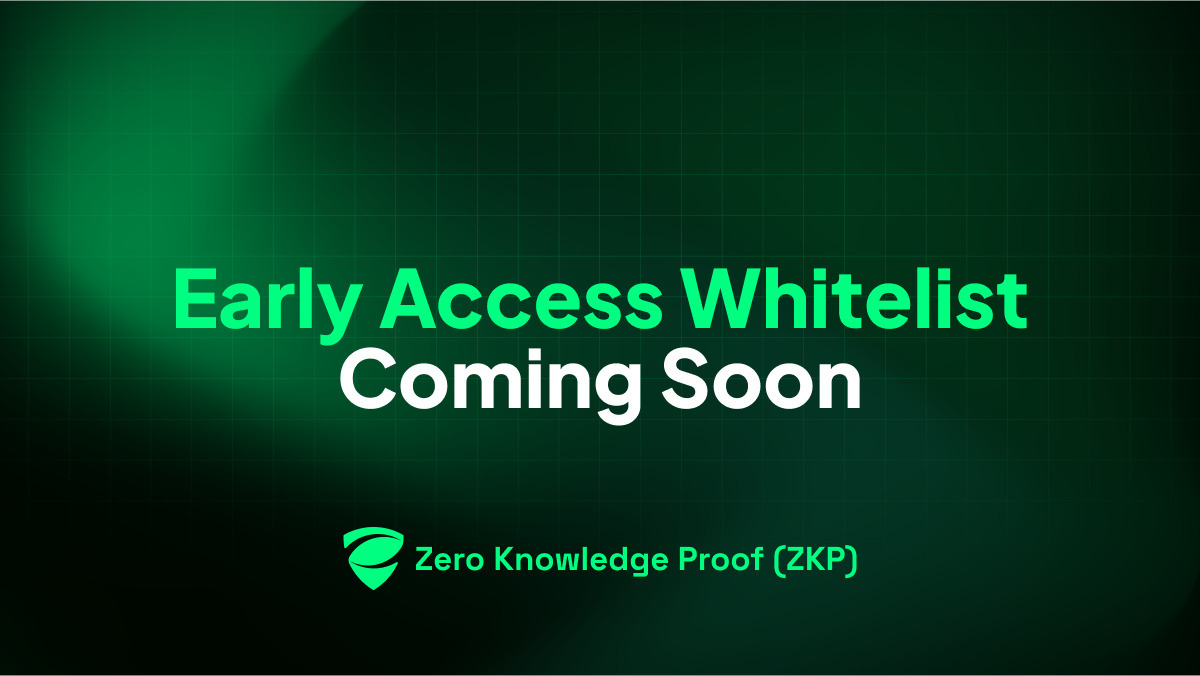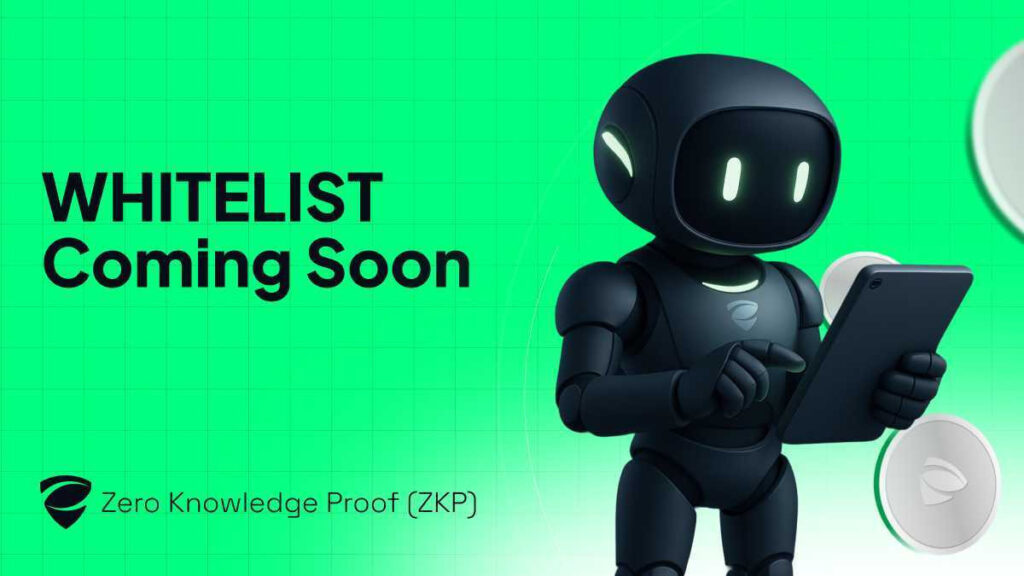When most networks boast about speed, they often ignore a hidden flaw: everything still happens one after another. Even blockchains that claim thousands of transactions per second eventually slow down as demand rises.
Sequential processing creates a choke point that no clever optimization can fully fix. Zero Knowledge Proof (ZKP) takes a completely different route. It’s built for a world that demands unlimited scalability, using Parallel Computation as its foundation.
This architectural choice lets it process multiple tasks at once, similar to how modern supercomputers work. That’s not just an upgrade. It’s a total reinvention of how blockchain handles workload and scale.
The whitelist for presale access will open soon, designed for those who see technology not as a trend but as infrastructure for the next decade. Early access to Zero Knowledge Proof (ZKP) means entering before the rest of the market realizes what true parallelism can achieve in decentralized systems.
The Problem With Sequential Blockchains
Every blockchain today faces a ceiling. The structure of sequential processing, where each block or transaction must wait for the previous one to complete, creates bottlenecks. No matter how fast the base layer is optimized, linear design keeps the network vulnerable to congestion.
Here’s what happens when a chain scales without architectural change:
- Transactions queue up, increasing gas fees.
- Confirmation times rise, causing delays for users.
- Network validators must process data one piece at a time, creating stress at peak hours.
That’s not scalability. It’s a controlled slowdown. The Zero Knowledge Proof blockchain doesn’t just add speed; it changes how speed is achieved. Instead of stacking transactions in line, it spreads them across parallel verification lanes. This is the same principle that powers cloud computing, gaming engines, and neural networks.
Parallel Computation transforms blockchain from a single-lane road into a multi-lane expressway. Each verification node can handle multiple proofs simultaneously, ensuring no one user slows the entire system down. This is how Zero Knowledge Proof (ZKP) keeps performance steady even when usage explodes.
Parallel Computation: The Hidden Power
Most investors hear “TPS” and think it’s all that matters. But the real strength of a network lies in how it handles verification at scale. Parallel Computation is what makes Zero Knowledge Proof (ZKP) fundamentally superior to conventional blockchains.
Here’s what sets it apart:
- Distributed Verification: Each node can validate separate proof sets at the same time.
- Load Balancing: Network stress is automatically distributed across multiple processors.
- Dynamic Scaling: As more nodes join, overall capacity expands proportionally.
This architecture makes performance growth exponential, not incremental. It’s how Zero Knowledge Proof (ZKP) can sustain high throughput without relying on centralized servers or validator shortcuts. While others fight bottlenecks, ZKP avoids them by design.
This isn’t about theoretical scalability, it’s about practical performance under real-world load. The network acts like a living computation grid, constantly balancing and redistributing tasks. When traffic spikes, instead of slowing down, it speeds up. That’s the magic of Parallel Computation.
Built Like a Supercomputer, Governed Like a DAO
Zero Knowledge Proof (ZKP) isn’t just technically advanced. It’s structured for resilience. The architecture blends Parallel Computation with decentralized governance, giving the ecosystem both scale and direction. The DAO model ensures that expansion is guided by the community, not a central entity.
The system’s architecture connects three major components:
- Modular Core: Each layer, privacy, computation, and scaling can evolve independently.
- Decentralized Governance: Through quadratic voting, no single holder can dominate upgrades.
- Self-Funding Treasury: Ecosystem grants and research initiatives ensure continuous development.
Together, these elements turn Zero Knowledge Proof (ZKP) into a network that evolves as fast as its technology. It’s not just built to grow; it’s built to adapt. The synergy between Parallel Computation and modular governance creates something most projects lack: a living, self-correcting system.
This design gives developers a flexible platform where scaling and privacy don’t compete; they cooperate. Applications built on ZKP can process private smart contracts and still enjoy instant confirmation speeds. It’s blockchain performance without compromise.
Why Parallel Design Is the Ultimate Edge
Scalability isn’t just about numbers. It’s about sustainability. Many blockchains start strong and then crumble under their own traffic. The future belongs to networks that grow stronger with every new user. Zero Knowledge Proof (ZKP) achieves that through its parallel-first design.

Here’s why this matters:
- No Centralization Risks: Parallel verification doesn’t need supernodes. It scales naturally.
- Predictable Costs: Low fees stay constant, even under high demand.
- Future-Ready Performance: As new processors and technologies evolve, the system can absorb them seamlessly.
Parallel Computation is not a buzzword. It’s a competitive moat. Once networks hit congestion, it’s nearly impossible to retrofit parallelism. That’s why Zero Knowledge Proof (ZKP) is not playing catch-up, but setting a new standard. The whitelist for presale access will open soon for those who understand that architecture is destiny. In crypto, design wins long after hype fades.
A Future Engineered for Scale
Zero Knowledge Proof (ZKP) represents a blockchain built for the future, not just the next hype cycle. Its foundation in Parallel Computation allows the network to scale intelligently, where every new user increases capacity instead of congestion.
By combining privacy-first infrastructure, modular architecture, and DAO-based governance, ZKP achieves what others attempt through patches and upgrades. It’s a network that evolves naturally, maintaining high throughput without compromising decentralization.
As privacy and scalability become non-negotiable, ZKP’s architecture stands out as the model for lasting performance. When the whitelist opens soon, it will mark the entry point into a system designed to run like a supercomputer, proving that the strongest blockchains don’t compete on speed alone, but on how intelligently they scale.
This article contains information about a cryptocurrency presale. Crypto Economy is not associated with the project. As with any initiative within the crypto ecosystem, we encourage users to do their own research before participating, carefully considering both the potential and the risks involved. This content is for informational purposes only and does not constitute investment advice.




